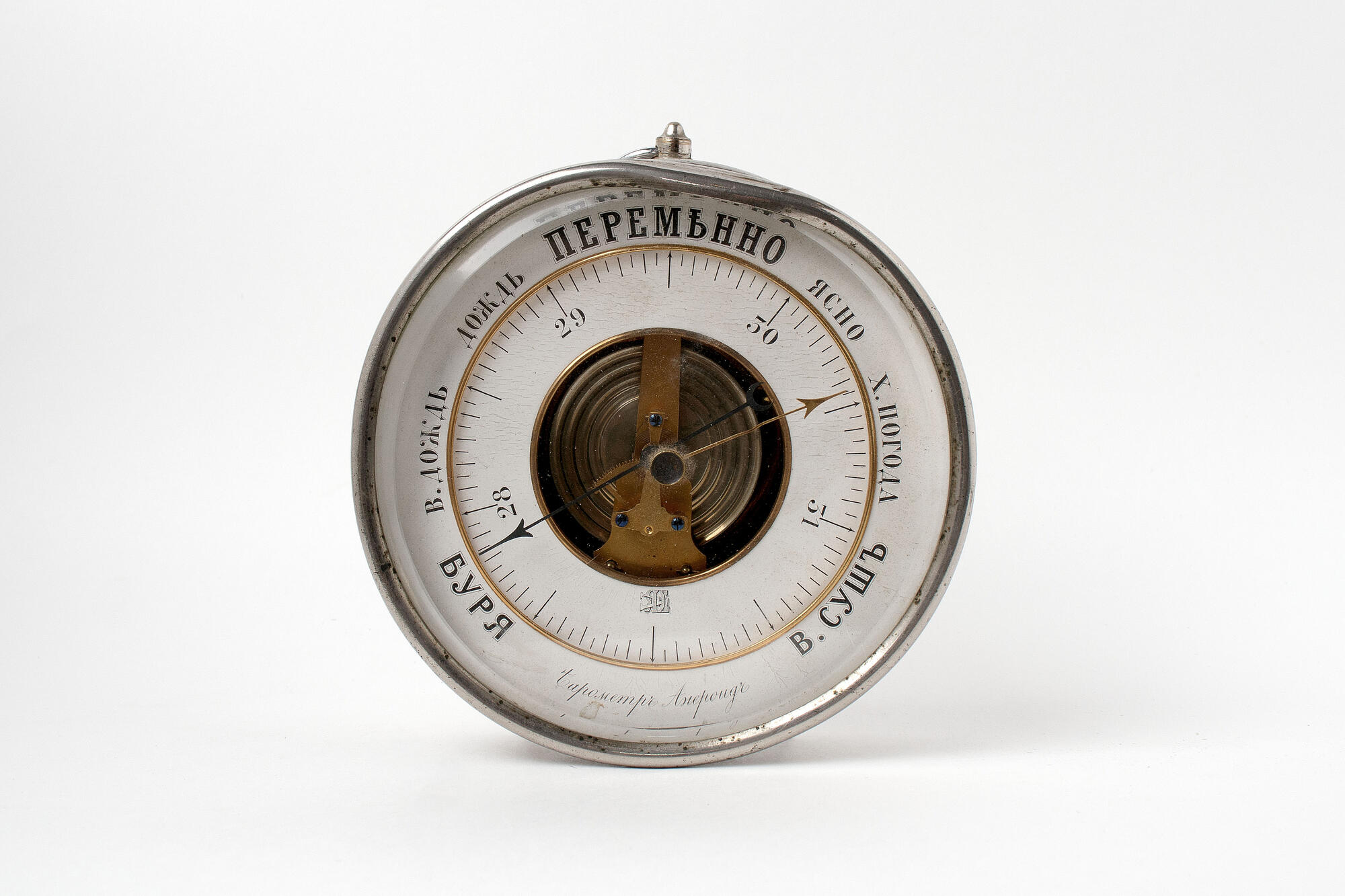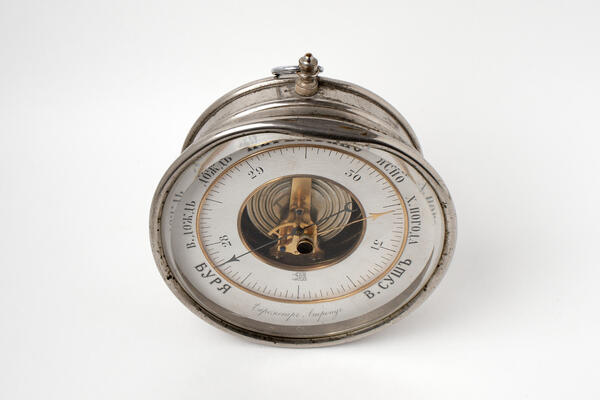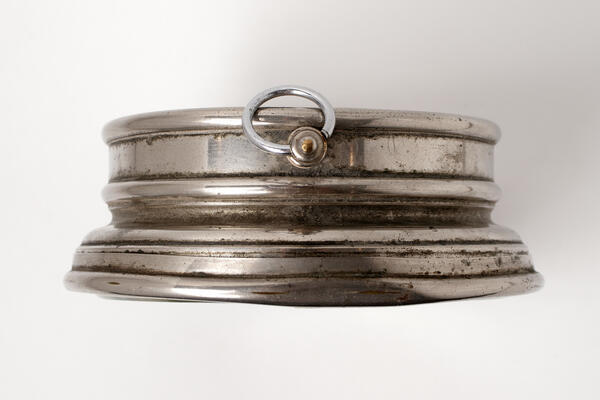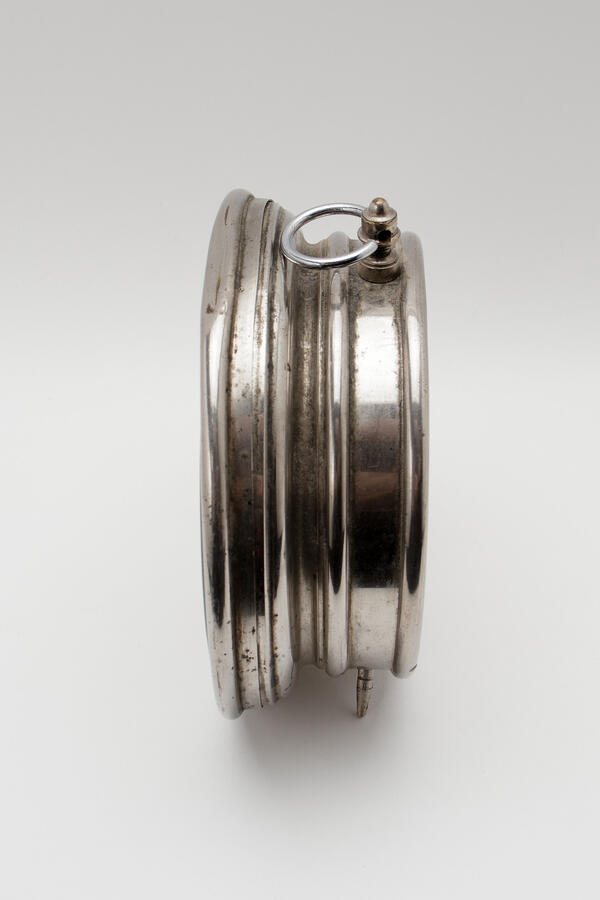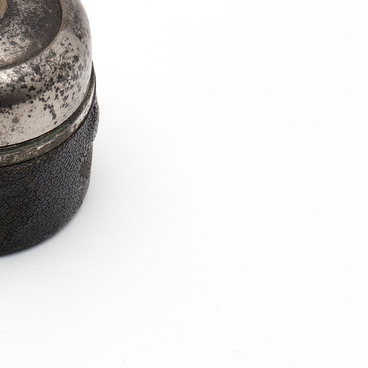An aneroid barometer is an instrument for measuring air pressure that does not involve liquid. It comes from the Greek language, where “a” is a negative prefix, and “nērós” means “water”. The main part of this device is the metal aneroid cell, which is a metal bellows that acts as a vacuum chamber. When atmospheric pressure increases, the aneroid cell contracts and pulls the spring attached to it, and when it decreases, the box inflates, pushing the membrane.
Changes in the tension of the spring are transmitted via a system of levers to the pointers which move along the dial. Instead of springs, latest designs use more elastic cells. To compensate for the inaccuracies of readings caused by temperatures, aneroid barometers often feature a thermometer dial.
Another way of compensating thermal inaccuracies is to make one of the levers that transmits changes to the pointer from a bimetallic, i.e. composite, alloy. This design was developed by the French company Naudet and is used to this day. To obtain the true pressure value, readings from the aneroid barometer need corrections, which are determined by comparing its measurements to those of a mercury barometer.
In total, there are three compensating systems included in an aneroid barometer: one for the dial which compensates for the aneroid cell reacting unevenly to pressure changes in different parts of the dial; the other for canceling out temperature-induced errors caused by the elastic properties of the aneroid cell and spring; and finally the supplementary system, that takes into account changes in the elastic properties of the box and spring over time.
Aneroid barometers are convenient and portable devices, and therefore they are actively used in expeditions and everyday life. They can also be used as altimeters — in this case, the aneroid scale is graduated in meters. The measurement error of the instrument is 1–2.5 millibar, where one bar is approximately equal to one standard atmosphere. An aneroid barometer is one of the main instruments used by meteorologists for making short-term weather predictions, since its change directly depends on fluctuations in atmospheric pressure. Before the cold wave hits, the pressure decreases, and on the eve of warming, it increases.
